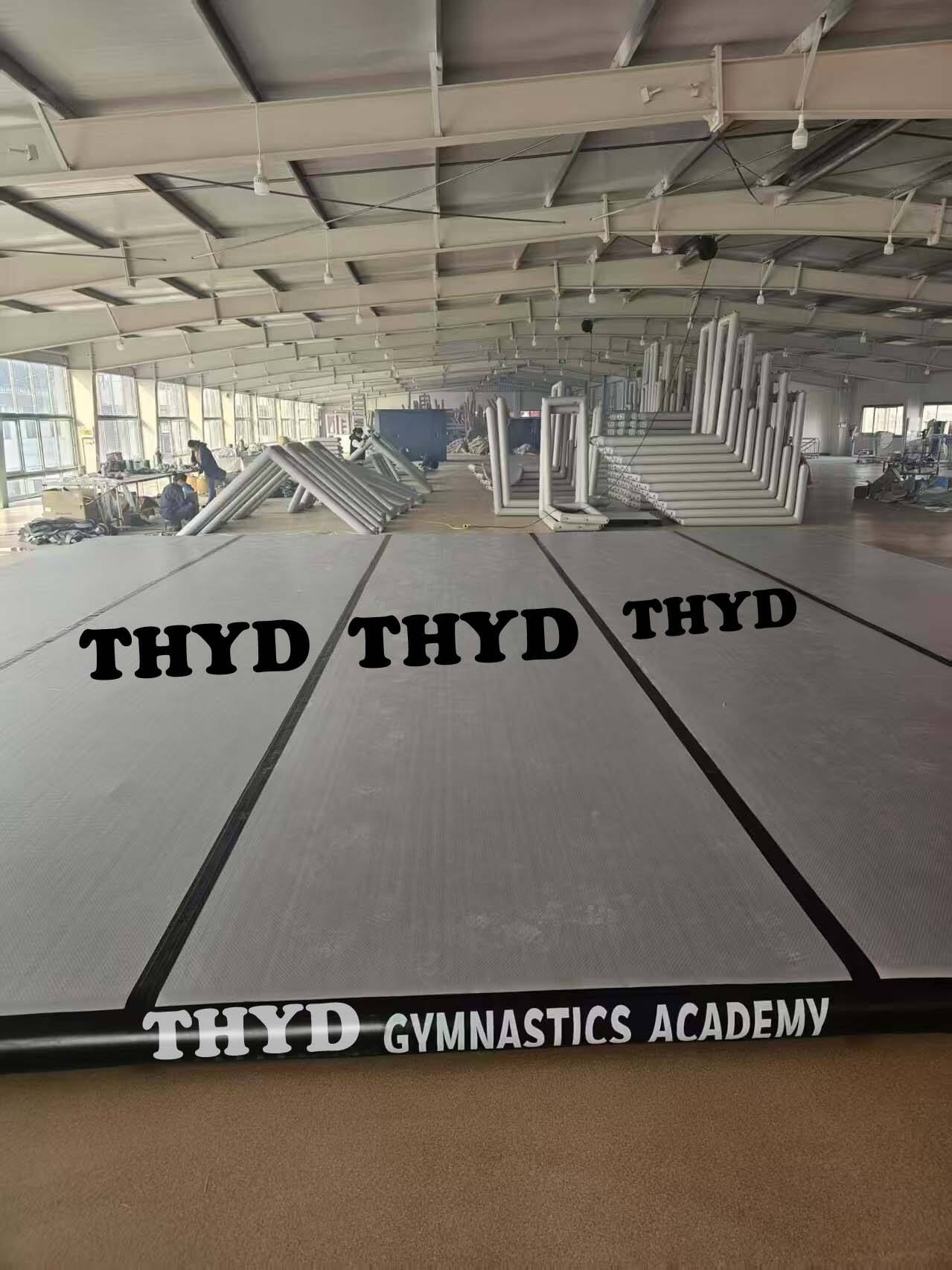The Evolution of Modern Gymnastics Training Equipment
The landscape of gymnastics and acrobatic training has been transformed by innovative equipment, with the air track emerging as a revolutionary training tool. This inflatable training surface has redefined how athletes progress from basic movements to complex skills, offering a perfect balance of stability and bounce. The growing popularity of air tracks in gymnastics facilities, cheerleading centers, and even home training setups speaks volumes about their effectiveness in skill development.
Modern air track technology combines durability with precision engineering, creating a consistent training surface that responds predictably to every movement. This reliability is crucial for athletes developing spatial awareness and building confidence in their abilities. The versatility of an air track makes it an invaluable asset for beginners taking their first steps into tumbling, as well as advanced athletes perfecting their most challenging skills.
Understanding Air Track Technology and Benefits
Core Components and Design Features
At its heart, an air track consists of thousands of tightly woven threads connecting the top and bottom surfaces, creating a uniform rebound effect. The high-quality PVC material used in construction ensures longevity while maintaining optimal performance. The internal structure allows for customizable air pressure, enabling coaches to adjust the surface's firmness based on the skill level and specific needs of each athlete.
The double-wall design and reinforced seams contribute to the air track's stability and durability. This engineering ensures that the surface remains level and responsive, even after countless hours of training. The non-slip surface texture provides essential grip, while the air cushioning system absorbs impact effectively, significantly reducing the risk of training-related injuries.
Training Advantages Over Traditional Surfaces
Unlike traditional spring floors or foam mats, an air track offers adjustable bounce characteristics that can be fine-tuned for different skills and experience levels. This adaptability makes it an excellent tool for progression training, allowing athletes to build confidence gradually. The forgiving nature of the surface reduces impact stress on joints and muscles, enabling longer training sessions with reduced fatigue.
The portable nature of air tracks adds another dimension to their utility. Coaches can easily reconfigure training spaces, creating varied workout environments that keep athletes engaged and challenged. This flexibility is particularly valuable in facilities with limited space or those serving multiple disciplines.
Progressive Skill Development Methodology
Foundation Building Techniques
Successful skill progression on an air track begins with mastering fundamental movements. Basic jumps, rolls, and body positions form the cornerstone of more advanced skills. Athletes should focus on developing proper body alignment and spatial awareness through simple bouncing exercises and basic locomotor movements. These foundational elements create the muscle memory and body control necessary for complex skills.
Core stability exercises and balance drills on the air track help athletes develop the strength and control needed for advanced tumbling. The slightly unstable surface naturally engages stabilizer muscles, enhancing proprioception and overall body awareness. Regular practice of these basics ensures a solid technical foundation for future skill development.
Advanced Skill Integration
As athletes progress, the air track becomes an invaluable tool for learning and perfecting advanced skills. The forgiving surface allows for multiple repetitions of challenging movements while reducing the fear factor associated with new skills. Coaches can implement specific drills and progressions that gradually build up to full techniques, ensuring proper form and technique throughout the learning process.
Complex skills like back handsprings, aerials, and full twists become more approachable on an air track. The controlled bounce assists in generating height and rotation while providing a safer landing surface. This environment encourages athletes to push their boundaries while maintaining proper technique and body control.

Safety Protocols and Best Practices
Equipment Setup and Maintenance
Proper air track setup is crucial for safe and effective training. Regular pressure checks and adjustments ensure optimal performance and prevent unexpected changes in surface response. The surrounding area should be clear of obstacles, with appropriate crash mats positioned strategically. Proper maintenance includes regular cleaning, inspection for wear, and prompt repair of any damage.
Temperature and environmental conditions can affect air track performance. Indoor use is recommended to maintain consistent pressure and prevent exposure to harsh elements. Following manufacturer guidelines for inflation, storage, and care extends the equipment's lifespan and maintains its safety features.
Supervision and Spotting Guidelines
Qualified supervision is essential when training on an air track, particularly when learning new skills. Proper spotting techniques must be adapted to account for the unique properties of the inflatable surface. Coaches should be well-versed in progression-based teaching methods and understand how the air track's characteristics affect movement patterns.
Clear communication between coach and athlete is vital for safe skill development. Establishing specific training zones, implementing proper warm-up protocols, and enforcing rest periods helps prevent fatigue-related accidents. Regular assessment of skill progression ensures athletes advance at an appropriate pace.
Frequently Asked Questions
How often should air track pressure be checked?
Air track pressure should be checked before each training session and adjusted as needed. Environmental factors like temperature changes can affect pressure levels, so monitoring throughout longer sessions is recommended. A properly inflated air track should feel firm but have slight give when stepped on.
What size air track is best for home training?
For home training, an air track measuring 10-15 feet in length and 3-4 feet in width typically provides adequate space for basic skills and tumbling passes. Consider ceiling height and available storage space when selecting dimensions. Longer tracks may be necessary for advanced skills requiring more run-up space.
Can air tracks be used for multiple disciplines?
Air tracks are versatile training tools suitable for various activities including gymnastics, cheerleading, martial arts, and parkour. The adjustable pressure allows customization for different training needs, making them valuable for cross-training and multi-discipline facilities. Always ensure proper supervision and appropriate pressure settings for specific activities.


